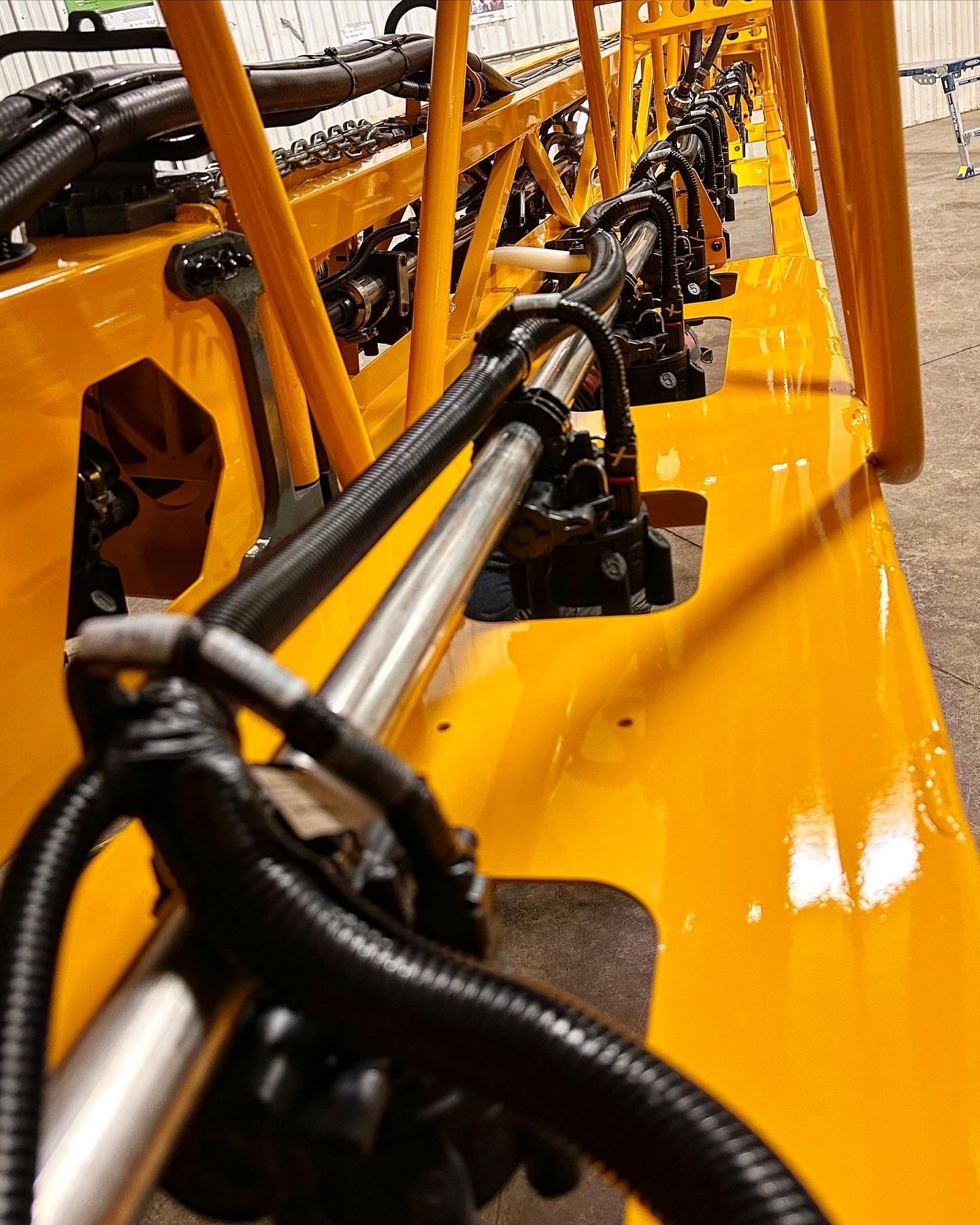The Science Behind Ceramic Coating | Why Cross-Linking Outperforms Wax and Sealants
Why Cross-Linking Outperforms Wax and Sealants
Ceramic coating is often misunderstood. Many people think it’s simply “a layer that sits on top of paint,” like wax or a clear sealant. In reality, the strength of ceramic protection comes from cross-linking chemistry — the ability to bond into the paint itself and form a durable shield.
Waxes and Sealants: A Temporary Shield
- Surface only: Waxes and polymer sealants rest on top of paint.
- Short-lived: Heat, UV, and detergents break them down in weeks or months.
- High maintenance: Reapplication is needed frequently to maintain protection.
For farm and fleet equipment exposed to road salt, agrichemicals, fertilizers, and constant washdowns, waxes simply don’t last.
Ceramic Coating: Cross-Linked Protection
A true ceramic coating works differently:
- Nanoparticles at work: Ceramic formulas are often based on silica. These particles are small enough to bond at the molecular level.
- Cross-linking reaction: During curing, the coating forms a lattice-like network that locks into the paint surface.
- Bonded durability: Instead of just sitting on top, the coating becomes part of the finish itself.
This cross-linked structure is the reason ceramic coatings can last years instead of months.
Why Ceramic Coatings Can Inhibit Oxidation on Single-Stage Paint
Single-stage finishes, common on tractors, sprayers, and heavy trucks, are especially vulnerable to oxidation. Once paint begins to chalk and fade, oxygen finds its way deeper into the layer, weakening it further.
When a ceramic coating is applied correctly:
- The cross-linked bond seals the bare paint from oxygen and moisture.
- This inhibits new oxidation from forming beneath the surface.
- The finish stays brighter and stronger, buying years of service life.
But this only works if the surface is fully prepared.
The Critical Importance of Removing All Oxidation Before Coating
Here’s where many DIY jobs and new installers go wrong.
It’s relatively easy to polish out the top 70% of oxidation — the paint gets glossier, the color deepens, and it looks “done.”
But the last 30% of oxidation is the hardest:
- It can take 10 times longer to remove than the first 70%.
- It requires a trained eye to recognize whether the paint is truly clean or just temporarily shiny.
- At this stage, it’s easy to burn through thin paint if you’re not careful.
If a ceramic coating is applied over paint with oxidation still present, the oxidation will continue to spread underneath the coating. It’s the same as painting over rust — the rust keeps eating away beneath the new paint.
The only reliable solution is to remove oxidation completely before coating. That means:
- Polishing down until stable paint remains, even if it takes hours more.
- Knowing when to stop to avoid burning through thin areas.
- Only then applying ceramic coating, so it bonds directly to healthy paint.
Think of it like grinding rust down to bare steel before priming and painting. Skipping the prep step guarantees failure. Doing it right means the ceramic coating has a clean foundation to lock into — and oxidation never gets a foothold again.
Real-World Advantages of Cross-Linking
- Chemical resistance: Agrichemicals, fertilizers, and road salt struggle to penetrate a bonded lattice.
- Corrosion slowdown: By sealing surfaces, ceramic coatings reduce oxygen and moisture exposure — the two drivers of rust.
- UV defense: Plastics and trim resist cracking and fading.
- Even protection: Because the coating is tied into the paint, coverage stays consistent across wide panels, welds, boom arms, and frames.
Ongoing Testing for Stronger Bonds
At BK Industrial Coatings, we apply proven systems like Roar AG and Cerakote MC-2200, while actively evaluating contenders such as Endura EX-2C and Aegis. Each new formula is tested against agrichemicals, fertilizers, detergents, UV, and salt under Midwest working conditions.
Not every product can hold up to the abuse farm and fleet equipment takes. We only recommend coatings that truly cross-link and deliver reliable protection.
The Bottom Line
Cross-linking chemistry is what separates ceramic coatings from short-term waxes and sealants. Instead of washing away, a ceramic coating bonds into the paint itself — and when applied to fully deoxidized single-stage finishes, it prevents oxidation from ever taking hold again. That’s the difference between short-term shine and long-term protection.
Why must all oxidation be removed before applying ceramic coating?
All oxidation must be removed before ceramic coating because any oxidation left beneath the surface will continue to spread under the coating. Coating bare, healthy single-stage paint seals it off from oxygen and moisture, stopping oxidation before it starts, much like grinding rust to bare steel before painting.
Why must all oxidation be removed before applying ceramic coating?
All oxidation must be removed before ceramic coating because any oxidation left beneath the surface will continue to spread under the coating. Coating bare, healthy single-stage paint seals it off from oxygen and moisture, stopping oxidation before it starts, much like grinding rust to bare steel before painting.


